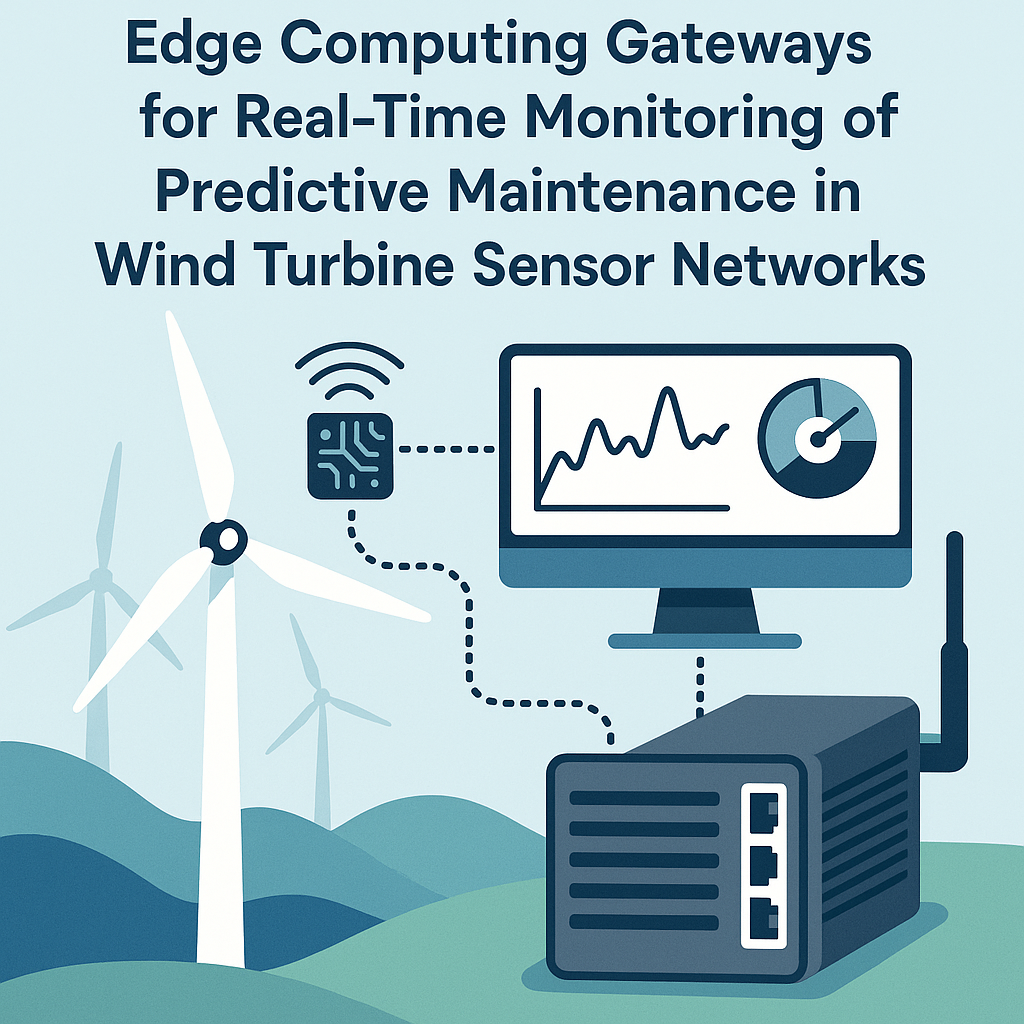Introduction
As the demand for renewable energy sources continues to rise, wind energy has emerged as a pivotal player in the global energy landscape. To optimize the performance and lifespan of wind turbines, predictive maintenance powered by real-time monitoring has become essential. This is where energy-efficient edge computing gateways come into play, enabling effective data processing and communication within wind turbine sensor networks. In this blog post, we will explore the design considerations for these gateways, their advantages, and their role in predictive maintenance.
Understanding Edge Computing in Wind Turbines
Edge computing refers to the practice of processing data closer to the source of data generation rather than relying solely on centralized cloud computing resources. In the context of wind turbines, edge computing gateways serve as the intermediary between sensors installed on turbines and the cloud infrastructure. Here are some key benefits:
- Reduced Latency: By processing data locally, edge computing minimizes the delay in data transmission, enabling real-time monitoring.
- Bandwidth Optimization: Only essential data is transmitted to the cloud, reducing the strain on network resources.
- Increased Reliability: Local processing ensures that data analysis continues even during network outages.
Key Design Considerations for Energy-Efficient Gateways
Designing energy-efficient edge computing gateways requires a comprehensive approach that balances performance, energy consumption, and cost. Below are the primary considerations:
1. Hardware Selection
The choice of hardware is critical to the efficiency of edge computing gateways. Key components include:
- Low-Power Processors: ARM-based processors or specialized IoT chips can provide sufficient processing power while consuming minimal energy.
- Energy-Efficient Memory: Selecting low-power memory options can significantly reduce the overall energy footprint.
- Integrated Sensors: Incorporating sensors directly into the gateway can streamline data collection and processing.
2. Data Processing Algorithms
Efficient data processing algorithms are essential for maximizing the performance of edge computing gateways. Considerations include:
- Real-Time Analytics: Implementing algorithms that can analyze data on-the-fly helps in timely decision-making.
- Machine Learning: Utilizing machine learning models to predict maintenance needs based on sensor data can enhance predictive capabilities.
- Data Aggregation: Efficiently aggregating data from multiple sensors reduces redundancy and conserves bandwidth.
3. Energy Management Techniques
To ensure that gateways operate efficiently, energy management strategies should be integrated into their design:
- Dynamic Voltage and Frequency Scaling (DVFS): By adjusting the voltage and frequency according to workload, energy consumption can be minimized.
- Sleep Modes: Implementing sleep modes during periods of inactivity allows gateways to conserve energy.
- Renewable Energy Sources: Utilizing solar panels or wind energy to power the gateways can enhance sustainability.
Real-Time Monitoring and Predictive Maintenance
Real-time monitoring is integral to predictive maintenance in wind turbine operations. The role of edge computing gateways in this process includes:
- Continuous Data Collection: Gateways collect data from various sensors, such as vibration, temperature, and wind speed, providing a comprehensive view of turbine health.
- Alerts and Notifications: When anomalies are detected, gateways can trigger immediate alerts, allowing for swift action and minimizing downtime.
- Long-Term Analytics: Historical data collected by gateways can inform maintenance schedules and operational strategies, ensuring optimal performance.
Case Studies and Examples
Several companies have implemented energy-efficient edge computing gateways in their wind turbine operations. Here are a few notable examples:
- Siemens Gamesa: By integrating edge computing gateways, they have improved their predictive maintenance capabilities, resulting in a 20% reduction in unplanned downtime.
- General Electric: GE’s digital wind farm solutions utilize edge computing to enhance data processing, allowing operators to make informed decisions about maintenance and operations.
- Vestas: Their use of edge computing technology has led to significant improvements in energy efficiency and operational transparency across their turbine fleet.
Conclusion
Energy-efficient edge computing gateways are revolutionizing the way wind turbine sensor networks operate, making real-time monitoring and predictive maintenance not only feasible but also efficient. By focusing on hardware selection, data processing algorithms, and energy management techniques, we can create gateways that optimize performance while reducing energy consumption. As the wind energy sector continues to grow, these advancements will be crucial in ensuring the sustainability and reliability of renewable energy resources.



